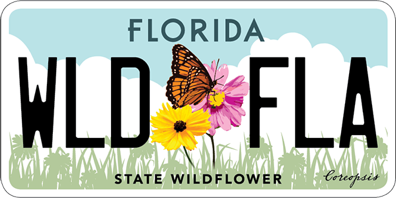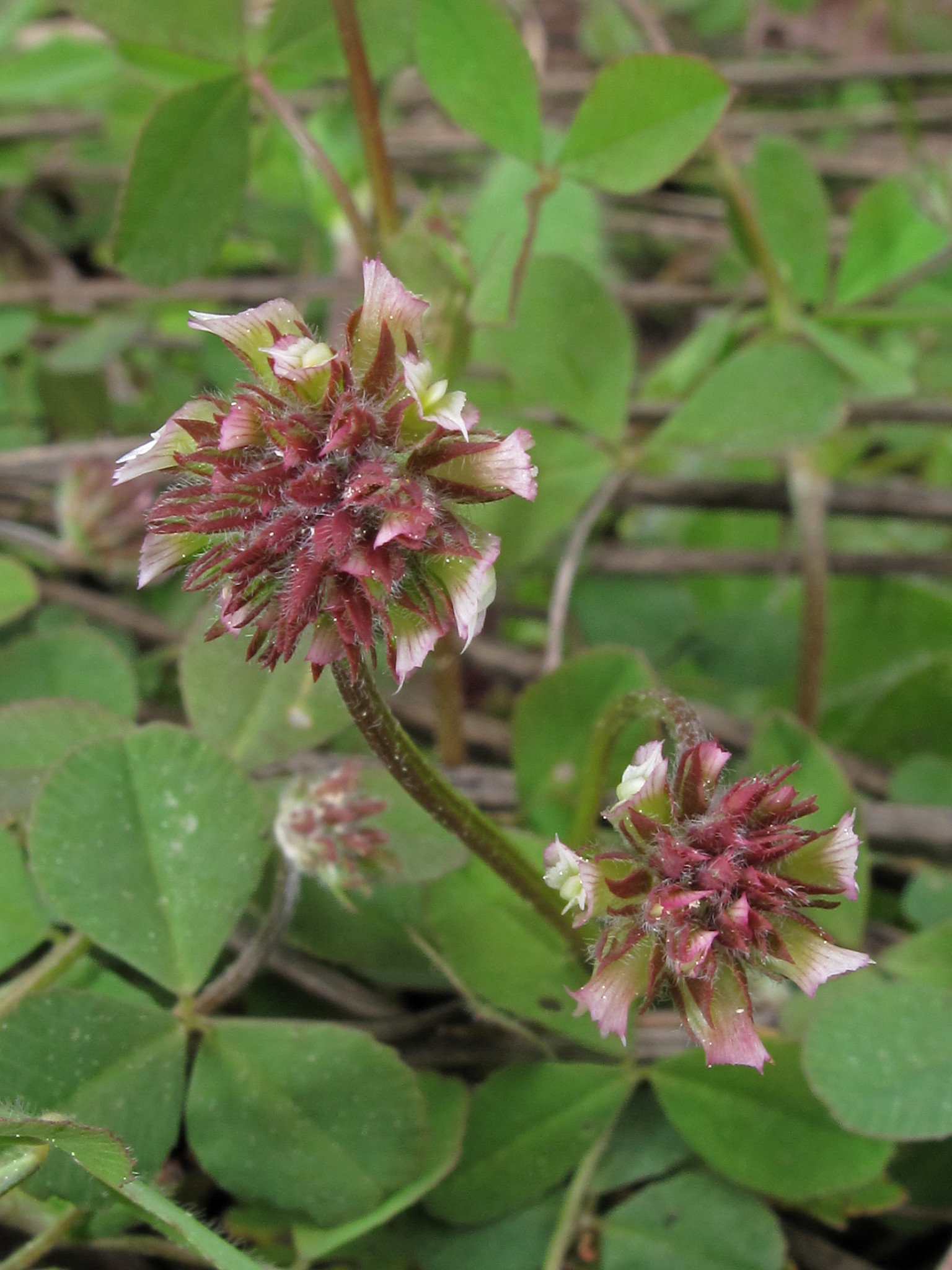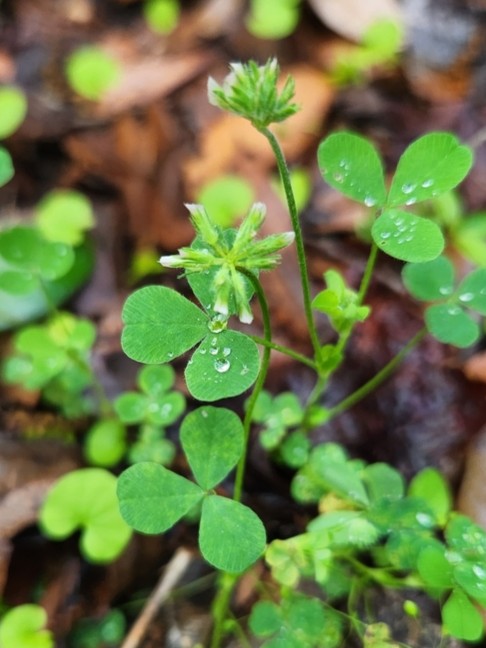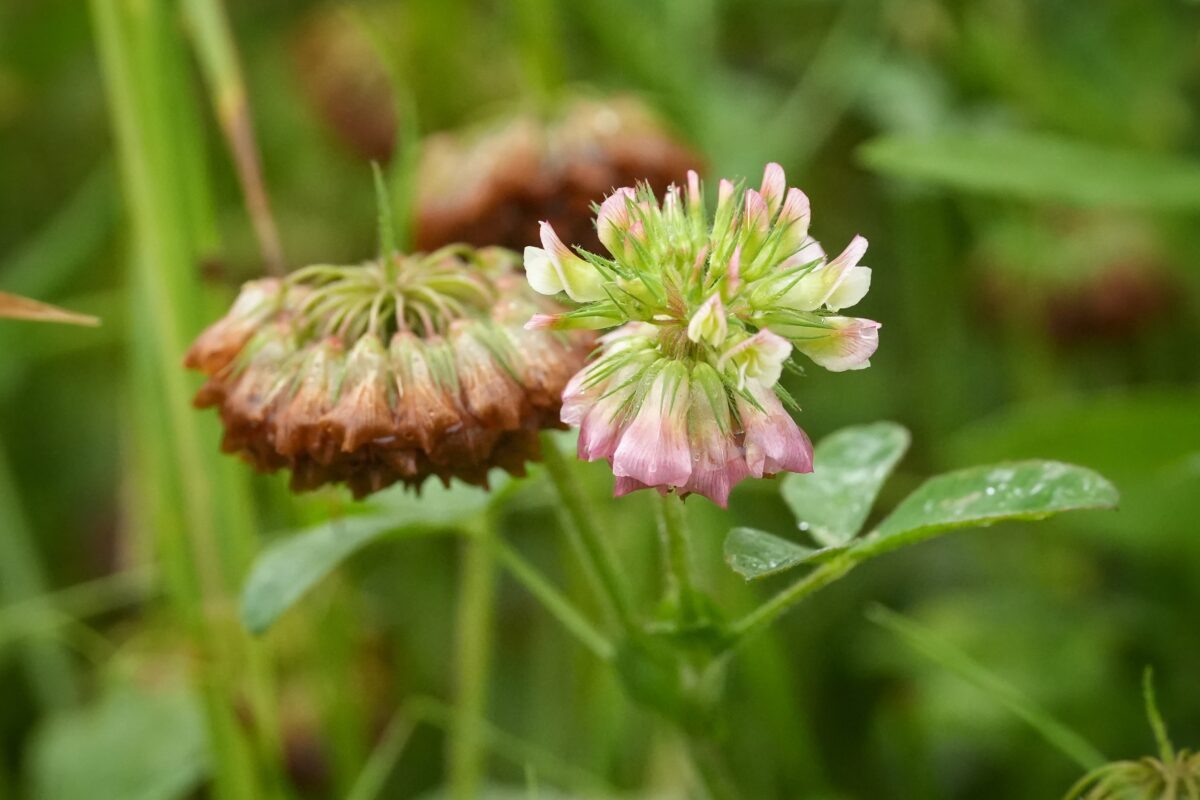Carolina clover
Pictured above: Carolina clover (Trifolium carolinianum) by Alan Cressler. Click on terms for botanical definitions. View post as a PDF.
Carolina clover (Trifolium carolinianum) is a low-growing, clumping wildflower that occurs naturally in sandy open woodlands and disturbed areas. It typically blooms from spring through early summer. The flowers are attractive to pollinators, and it may serve as a host plant for the Eastern tailed-blue butterfly (Cupido comyntas).
Its slender, wiry stems range from green to burgundy and typically measure 3 to 11 inches in length. The small green leaves are palmate and compound, with three leaflets that have entire or serrated margins may be. Leaves are alternately arranged. The globe-shaped inflorescences have 5 to 40 tiny white to pink flowers born on short reflexed pedicels.
The genus name Trifolium is from the Latin tres, meaning “three,” and folium, meaning “leaf.” It refers to the characteristic compound leaves composed of three leaflets common to this genus
Family: Fabaceae (Legume, bean or pea family)
Native range: North Florida, Panhandle east to Putnam County
To see where natural populations of Carolina clover have been vouchered, visit florida.plantatlas.usf.edu.
Life span: Annual to short-lived perennial
Soil: Sand
Exposure: Full sun
Growth habit: Low growing groundcover, up to 11 inches
Propagation: Seed, division
Florida regions of landscape suitability: North
Garden tips: Carolina clover may be used as a wildflower garden border or a groundcover if planted en masse. It can also be used for bank stabilization or in naturalistic gardens.
Seeds may be available from the Florida Wildflower Growers Cooperative at www.FloridaWildflowers.com
For more information on other Trifolium species, see these resources:



